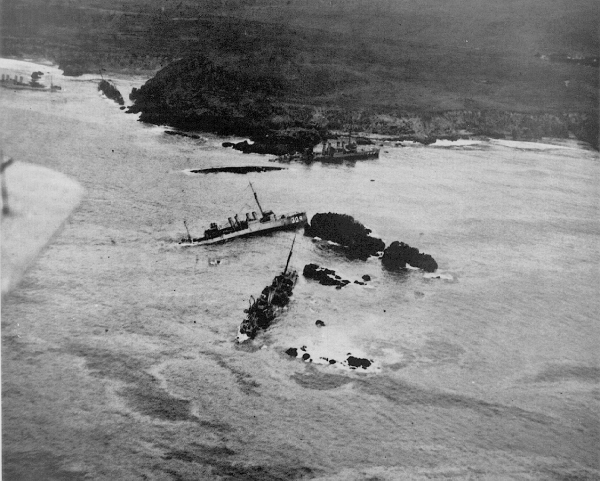
The Point Honda Disaster
On September 8, 1923, the US Navy Destroyer Squadron Eleven, less four vessels, left the
San Francisco Light Ship at 8:30 A.M. for San Diego. Around 11:00 A.M., the squadron was aligned
in standard formation with Pigeon Point Light on the port beam some one mile distant. The speed was
about 20 knots. After some simple tactical exercises, in the afternoon the squadron was formed in
column. Visibility while not great, did not interfere with the exercises.
At 8:50 P.M., after checking his position on the chart, the squadron commander decided to change
course to 090 degrees to make the approach to Santa Barbara Channel. The course change was made at
9:00 P.M. and five minutes later the USS Delphy stranded on Point Pedernales (known locally as Point
Honda). The squadron commander immediately sent warning signals to the vessels astern but, due
to the configuration of the coastline, the outlying rocks and the fact that the ships were in formation,
six other vessels were suddenly stranded on a rocky promontory at night. The lives of 800 officers
and men were in peril. A total of 23 lives were lost and more would have died except for the high
degree of discipline and morale in the squadron. The seven vessels were declared total wrecks and
later sold as hulks. In the historic photograph above notice the wing of the biplane at left.
--adapted from the Mariners Weather Log, Vol. 34, No. 3, Summer 1990
The last sentence in the first paragraph implies that fog (with visibility less than 1 kilometer) was not
present, but that mist probably was and may have been a contributor. September is a heavy fog
month along the Central California Coast, with fog or mist present in 13 percent of all marine weather
observations.
E-mail flame and blame to: Larry Riddle / lriddle@ucsd.edu
